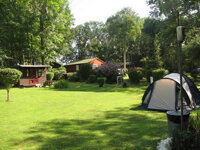Camping in South East England
1 campsite in England, South East for Naturist
Campsite Listing Google Map
The following consent is required:
Tracking & performance, Targeting & advertising.
South East England
Land of 1066, the South East is brimming with historical sights as castles, stately homes and cathedrals abound. It also boasts miles of footpaths and cycle routes through some of the best landscapes in England, passing chalk downland, wooded valleys and dramatic white-faced cliffs.
The South East comprises: East Sussex, West Sussex, Surrey and Kent.
What to see in South East England

The chalk countryside of golden downland in Sussex offers many opportunities for an active holiday, from walking and cycling to more adventurous pursuits such as rock climbing or ballooning. Once an ancient forest, much of the Weald is now taken up with farmland, but some areas still remain, including Ashdown Forest, a walker’s paradise with stunning views of the High Weald and South Downs.
The many rivers of the county have cut their way through gaps in the chalk landscape, ending spectacularly in white cliffs on the coast. Here you will find the Regency resorts of Bognor Regis and Brighton, with its Royal Pavilion, famous pier and quirky shops. Often referred to as the ‘Garden of England’, Kent is a richly fertile region flourishing with hop gardens, fruit orchards and flowers. It is also home to the world-renowned Canterbury Cathedral, several splendid castles, hidden towns, and quaint villages with oast houses. Surrey, too boasts a rich heritage with numerous stately homes and National Trust sites, plus large areas of ancient woodland. With a network of rivers, an enjoyable way to explore the beautiful countryside is by boat, stopping off at a riverside pub – or two!
Places of interest

- East Sussex: Royal Pavilion, Brighton; the cinque ports towns of Hastings and Rye; Eastbourne with its Victorian pier.
- West Sussex: Chichester Cathedral; Arundel, with its Norman castle and charming antique shops; Goodwood Racecourse.
- Surrey: Guildford Castle and Cathedral; Mole Valley; Royal Horticultural Society’s gardens at Wisley; Chessington World of Adventures; Dorking, a renowned centre for antiques; Runnymede; Thorpe Park in Chertsey.
- Kent: Leeds Castle and gardens with maze; Canterbury Cathedral, Roman museum and river tours; Dover, with museum and castle; traditional seaside resort of Broadstairs; Chartwell, family home of Sir Winston Churchill; Turner Art Gallery, Margate.
Did you know?
- The Battle of Hastings was actually fought six miles away at Senlac Hill.
- Brighton is home to Britain’s oldest electric railway, opened by Marcus Volks in 1883.
- The modernist De La Warr Pavilion, Bexhill, was designed by Serge Chermayeff and Erich Mendelsohn and opened in 1935.
- Fishbourne Palace, covering six acres, is the largest Roman site discovered in Britain.
- Runnymede takes its name from the meadow where the Magna Carta, the great charter of English liberties, was sealed by King John in 1215.
- Oscar Wilde wrote The Importance of Being Earnest in 1895 while living in Worthing.
